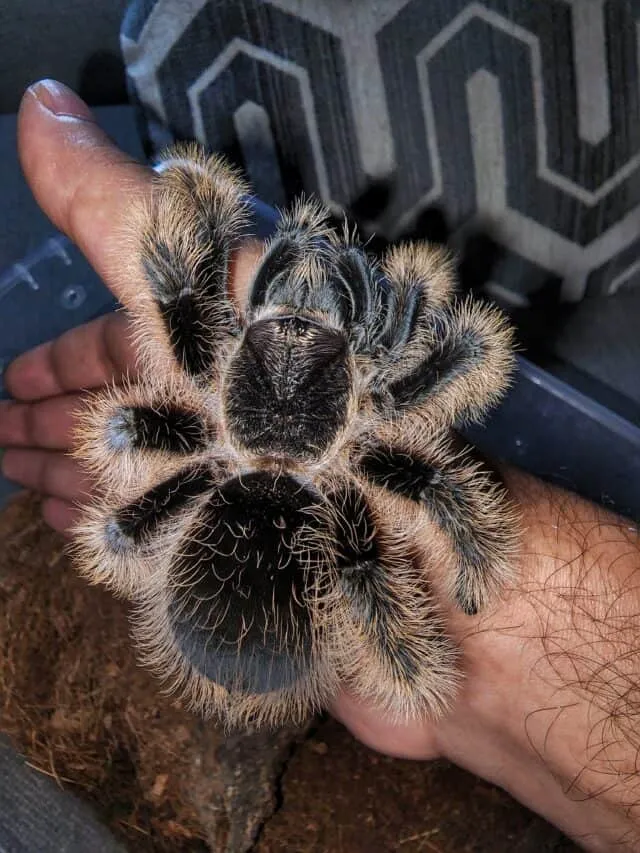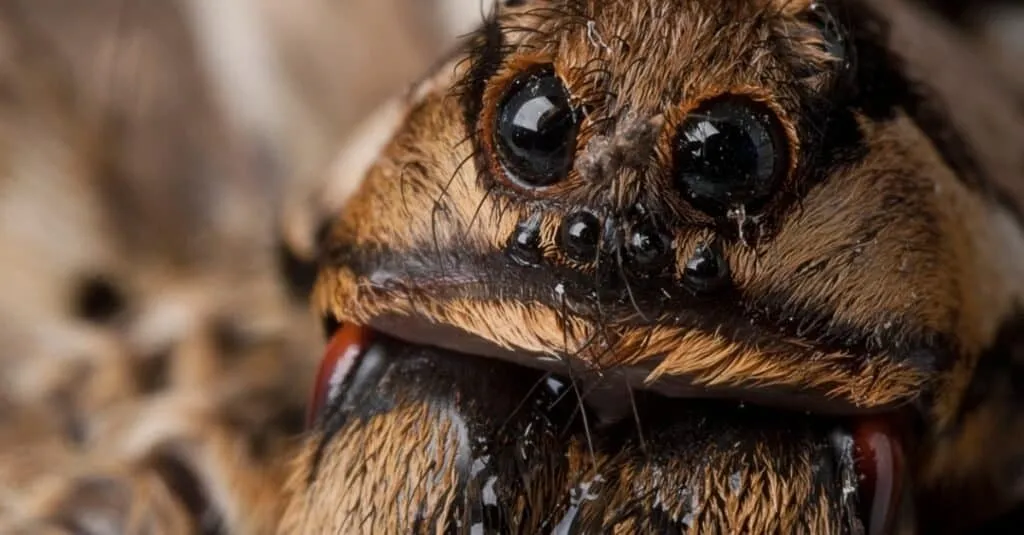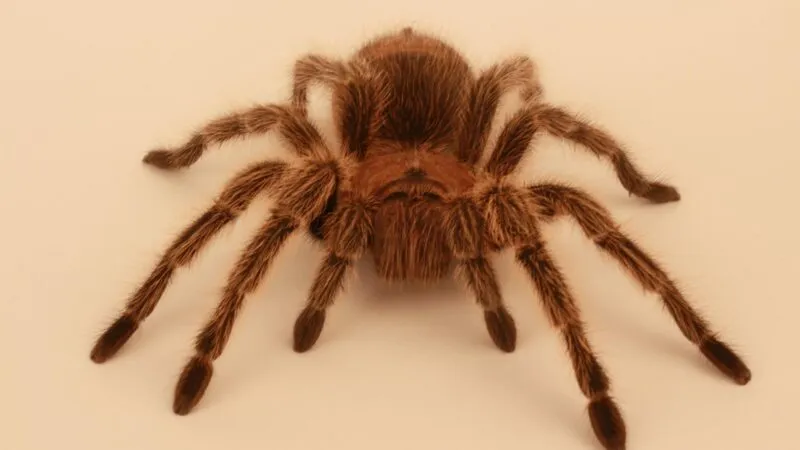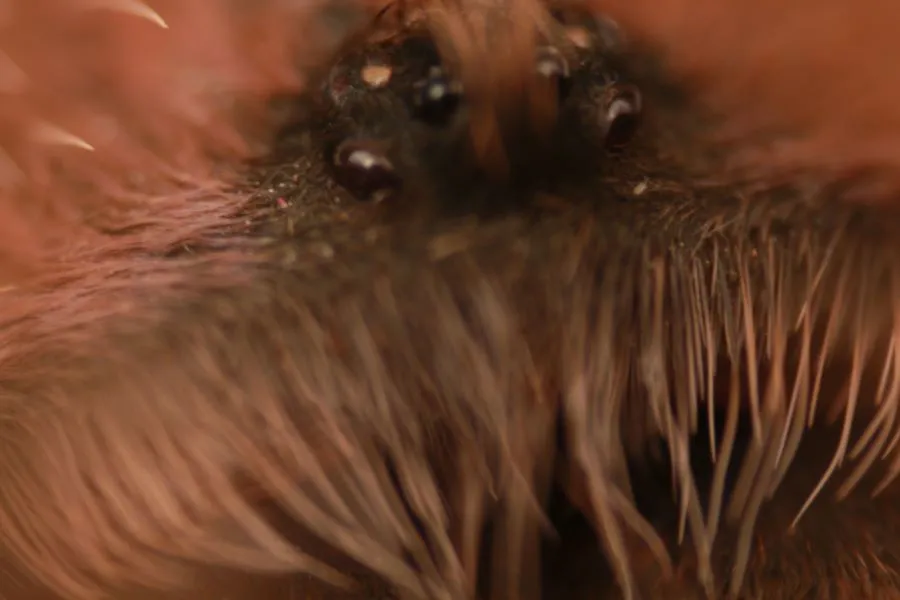How Many Eyes Do Tarantulas Have
Tarantulas, those fascinating, often misunderstood creatures, possess a unique visual system that helps them navigate their world. Unlike some other animals, tarantulas don’t rely heavily on sight, but their eyes play a crucial role in their survival. These arachnids have a specific number of eyes, and their arrangement and capabilities offer a glimpse into their hunting strategies and lifestyle. Understanding the number and the function of these eyes is key to appreciating the complex sensory world of these captivating spiders. This blog post unveils top facts about tarantula eyes, helping you understand more about these amazing creatures.
The Typical Tarantula Eye Arrangement
Most tarantulas have eight eyes, arranged in two rows on the front of their cephalothorax (the combined head and chest region). This specific arrangement is a characteristic feature of many spider species, allowing for a wide field of view. The positioning of the eyes enables tarantulas to detect movement and changes in light, crucial for both hunting and avoiding predators. Although tarantula eyesight isn’t as sharp as ours, the placement and arrangement of their eyes are perfectly adapted to their needs, giving them a sensory advantage in their environment. The arrangement is a crucial aspect of how they perceive the world.
Primary and Secondary Eyes

The eight eyes of a tarantula can be broadly categorized into primary and secondary eyes. These two groups serve different functions, with primary eyes being the main focus of vision and secondary eyes providing supplementary information. Primary eyes are responsible for forming images, while secondary eyes primarily detect movement and light changes. This division of labor among the eyes allows for a more comprehensive and efficient way of gathering visual information, contributing to the tarantula’s ability to react quickly to threats and find prey. The combined function of primary and secondary eyes is vital for the tarantula’s survival.
Primary Eyes
The primary eyes, usually located in the front row, are the ones responsible for forming the most detailed images. These eyes are equipped with a lens and retina, allowing for some level of image formation. However, the visual acuity of tarantulas is not as high as that of humans or some other animals. The primary eyes mainly perceive the shape and size of objects, but they do not offer a clear view of distant objects. The primary eyes are important for identifying prey and objects in their immediate vicinity, a critical function for hunters like tarantulas.
Secondary Eyes
The secondary eyes, distributed around the cephalothorax, play a crucial role in detecting motion and changes in light. They’re much more sensitive to light, allowing tarantulas to perceive movement from any direction, which is essential for detecting both prey and predators. These eyes are particularly useful in low-light conditions, which is where tarantulas often hunt. Secondary eyes provide a broader field of view than the primary eyes, which helps tarantulas to be aware of their surroundings and react quickly to any potential threats or opportunities. The secondary eyes are essential for the survival of the tarantulas.
What Tarantulas See

The world through a tarantula’s eyes is quite different from ours. They have a limited visual capacity, but their sight is perfectly adapted to their lifestyle. Their vision is not as sharp as that of humans or other animals. Their eyesight is mainly focused on detecting movement and light changes. This allows them to hunt successfully and avoid being hunted. The specific capabilities of their eyesight and the ways in which they utilize their eyes are key aspects of their survival in the wild.
Limited Vision
Tarantulas have a limited visual range, meaning they cannot see details as clearly as many other animals. Their eyes are not designed for fine visual acuity. Instead, their visual system emphasizes movement detection. This means that stationary objects may not be easily identified, while moving objects are immediately noticeable. This adaptation is essential for their predatory lifestyle, where the ability to quickly detect and react to moving prey is far more critical than the ability to see fine details. Limited vision is an example of how the eyes function perfectly for their specific environment.
Detecting Movement
The most significant strength of tarantula eyesight is their ability to detect movement. This is primarily thanks to their secondary eyes, which are exceptionally sensitive to any change in their surroundings. Whether it is a potential meal or an approaching danger, the ability to detect movement is crucial for tarantulas. This keen awareness helps them to ambush prey effectively and to escape from predators. This is why sudden movements can trigger a defensive or hunting response, because their eyes are designed to react quickly to anything moving.
Color Perception

Although the extent of color perception in tarantulas is not fully understood, it is generally believed that they see in shades of gray and may have limited color vision. This means that the ability to differentiate between colors is not as well-developed as in other species with more complex visual systems. Their visual system is more focused on detecting changes in light and movement, rather than discerning color. This is less of a disadvantage for tarantulas, since most of their prey and the environment they live in don’t rely on bright colors for survival.
Adaptations for Nocturnal Hunting
Many tarantula species are nocturnal hunters, meaning they are most active at night. Their eyes are adapted to this lifestyle. They possess several adaptations that help them hunt successfully in low-light conditions. This includes specialized light-sensitive cells in their eyes that enhance their ability to detect movement and light changes in the dark. This is also where the secondary eyes come into play, providing them with the visual acuity needed to catch prey. The ability to see and hunt in the dark gives these spiders a significant advantage.
Eyesight and Survival
The visual abilities of tarantulas are intimately linked to their survival. Their ability to detect movement is crucial for catching prey and escaping predators. Their eyes function in synergy with other sensory systems. Tarantulas also rely on other sensory tools such as sensory hairs and vibrations in the ground. These different sensory systems are crucial for their survival. Understanding the relationship between their eyesight and the rest of their senses helps in appreciating the complexity and efficiency of their survival strategies.
Importance of Sensory Hairs

In addition to their eyes, tarantulas have sensory hairs all over their bodies. These hairs are extremely sensitive to vibrations and air currents. These sensory hairs help them to detect the presence of prey or predators, particularly at a close range. This is why tarantulas can react to any movement around them. These hairs play a critical role in their hunting and defense, especially in environments where visual acuity is limited. Sensory hairs enhance the tarantula’s ability to perceive its environment and to navigate its surroundings effectively, even in darkness.
Eye Health in Captivity
For tarantulas kept as pets, maintaining eye health is essential for their well-being. Like any animal, tarantulas can experience eye-related problems, and knowing how to recognize and address these issues is part of responsible pet ownership. It is important to provide them with an environment that supports their health and prevents any visual problems. This involves regular care and understanding of their needs. By being aware of potential issues, you can ensure that your tarantula enjoys a long and healthy life.
Common Eye Problems
Tarantulas can experience several eye problems, though they are not as common as other health issues. Some of the common problems include injuries caused by rubbing against enclosure surfaces or by contact with sharp objects. Infections are also a concern. It is essential for owners to be aware of any change in the tarantula’s behavior or appearance, which can be an indication of potential eye problems. If you notice any changes, consult with a veterinarian who has experience with arachnids.
Maintaining Eye Health

Maintaining the eye health of your tarantula involves several key practices. This includes providing a clean, safe enclosure. Avoid sharp objects or rough surfaces that could cause injury. Regularly check the enclosure and the tarantula for signs of any health problems. Ensuring that the enclosure is at the right temperature and humidity is important. Proper diet and hydration are crucial for maintaining overall health and eye health. With the right care, you can help your tarantula to live a long and healthy life.
In conclusion, tarantulas possess a unique and effective visual system, finely tuned for their predatory lifestyle. From the arrangement of their eight eyes to their ability to detect movement, their eyesight is a key factor in their survival. Whether in the wild or in captivity, understanding the nuances of tarantula vision helps us appreciate these amazing creatures. By knowing the facts and providing the right care, we can help these remarkable spiders thrive.
